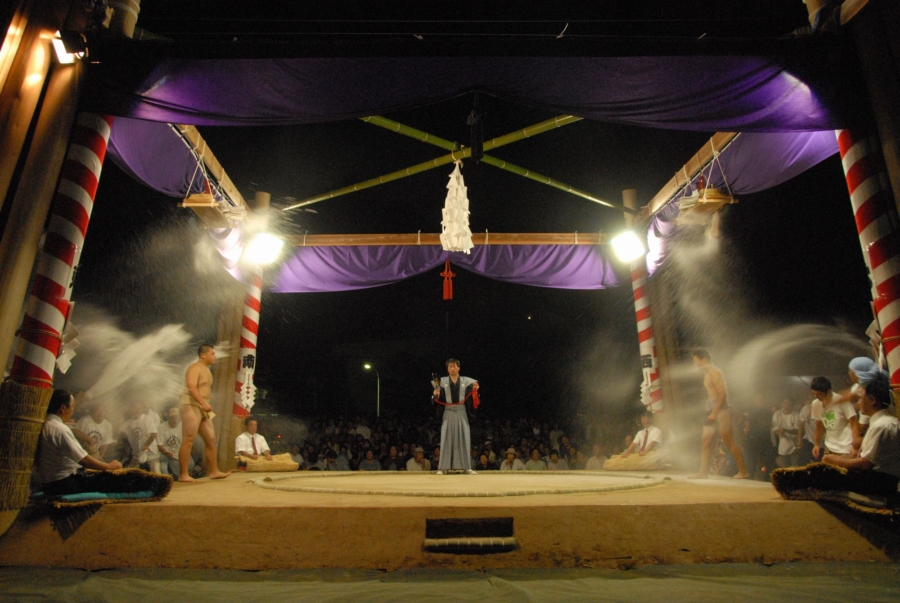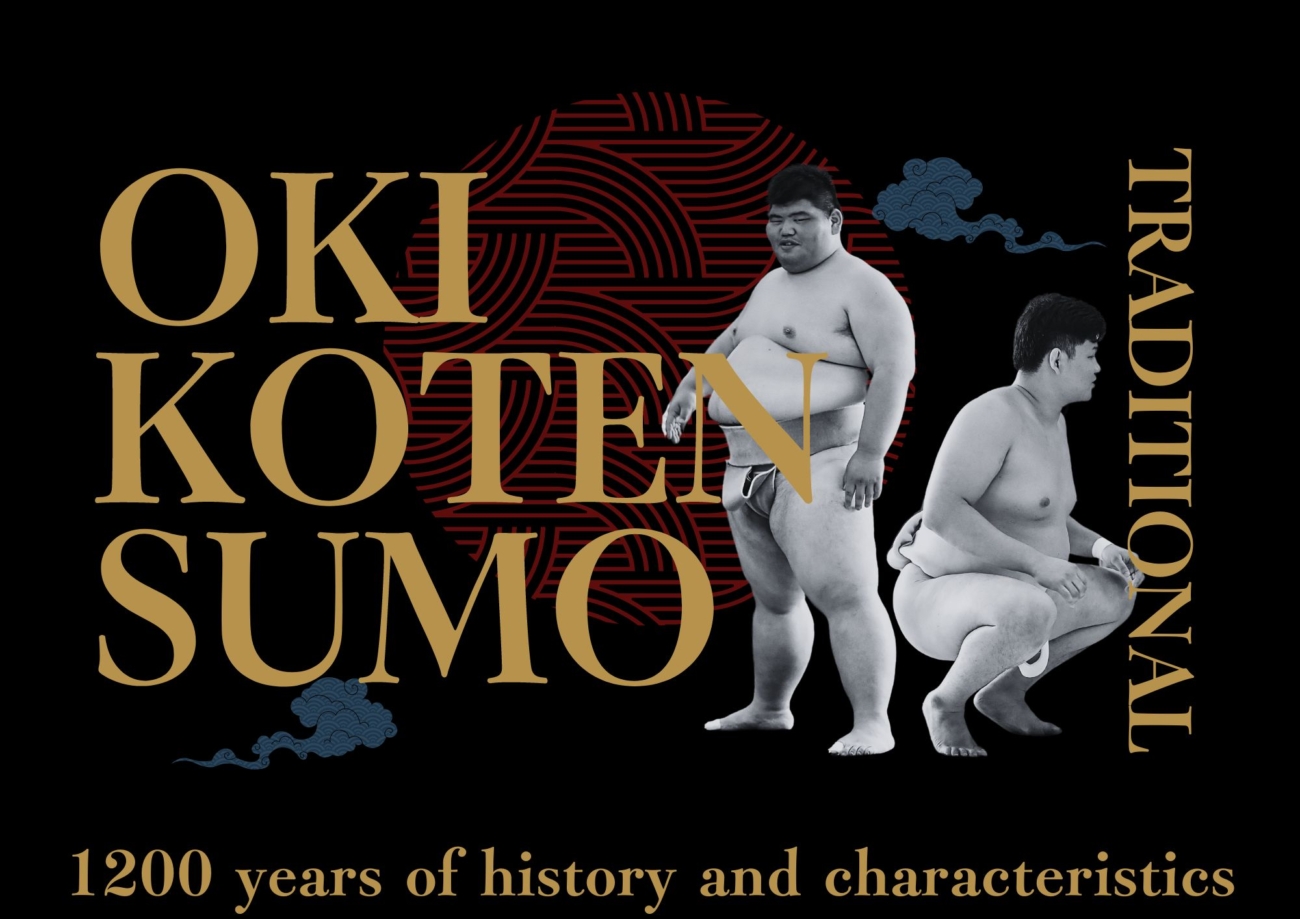The Island of Sumo
Oki Traditional Sumo is unique to Okinoshima Town, the town where sumo is considered the most popular in Shimane Prefecture. The sumo club of Shimane Prefectural Oki Fisheries High School, which is located in Okinoshima Town, is the only existing sumo club within the prefecture. Sumo rings can be found in many places on the island, and the town has produced a handful of Japanese professional sumo wrestlers. A movie about Oki Traditional Sumo has also been filmed there. But this uniquely Oki get-together is not held every year; it is only held to celebrate the rethatching of the roof of Mizuwakasu Shrine or the completion of an important public project. The rarity of the sumo tournament makes it even more special.

A Brief History of Sumo in Oki
The origin of sumo is said to be a contest of strength between two deities, with the important matter of “transfer of the land”, in the mythical era. In Oki, the “tenran-zumo” (sumo tournament performed in front of the Emperor) held around 1200 years ago is said to be the beginning of sumo on the islands. During the Edo period (1603-1868), sumo tournaments were held to raise money for temples and shrines, and is said to have evolved to its current form, which gives prayers and expresses gratitude to deities and Buddhas.
Oki Traditional Sumo is the name of sumo tournaments held in all areas of Okinoshima Town, and the sumo wrestlers represent the area where they live. This once-in-a-blue-moon occasion also acts as a get-together of all areas in Okinoshima Town, strengthening the harmony and relationship between.
The Endless Sumo Tournament
At around the time of sunset, the event kicks off with prayers for safe bouts on the sumo ring, followed by the Ring Entering ceremony and ceremonial sumo odori dance. Around five hours into the event, it is finally time for the formal bouts: “warizumo”, sets of two bouts where the winner of the first bout loses the second one, bouts where a sumo wrestler must beat five opponents in a row (age group divided), and curtain-raiser bouts. When it is finally the turn for ranked sumo wrestlers to wrestle, it would be fifteen hours into the event, and the tournament continues throughout the night. After all the bouts are fought, twenty hours would have passed, but the occasion doesn’t end here. After the bouts, it is time for sumo wrestlers’ celebratory feast.
Starting from the departure ceremony at the local shrines, preparations and after-parties, the tournament often takes up to three days. Sometimes, there are even after-after-parties. During the “endless” tournament, the spectators would be drinking themselves away while cheering for the sumo wrestlers.
Unique Practices and Distinctive Features
At a sumo tournament, the sumo wrestler tosses salt to purify the area after he enters the ring. However, here at the Oki Traditional Sumo tournament, the spectators join the sumo wrestlers at this purification ritual, sometimes showering the sumo wrestlers with salt. Also, the sumo wrestlers compete against their opponents twice. The winner of the first bout must let his opponent win the second bout, so each of them will bring home one win, thus ensuring the harmony between the different areas on the island. This is the reason why Oki Traditional Sumo is also called “compassionate sumo”. The winners of the tournament get to bring home a very unique prize; the pillars and beams that are used to build the sumo ring. In the past, these were very valuable materials for house building. Although nowadays, the winner’s pillars are kept under the eaves or outside a house, the tradition is kept. After the tournament, the winners are paraded back to their area, straddled on the pillar.
Save the Date: 14 – 15 September, 2024
To celebrate the 20th anniversary of the establishment of Okinoshima Town, the Oki Traditional Sumo tournament is scheduled to be held on 14 and 15 September, 2024. The tournament is going to be held at the new town hall building in Saigō area. Don’t miss the opportunity to be a spectator of this historical event.
Author: Chikara Kawakami
Translated and summarised by Cleo Wong

